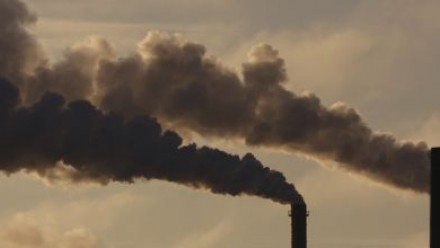Carbon removal
With recent research highlighting that average global temperatures may exceed the 1.5C target as quickly as 2026, it's becoming apparent that reducing our greenhouse gas emissions is unlikely to be enough to prevent dangerous climate change.
To maintain a safe climate, we also need to explore how we can remove these gases from the atmosphere (negative emissions). Importantly, all Intergovernmental Panel on Climate Change (IPCC) scenarios which limit warming to 1.5C (and most which limit warming to 2C) require implementation of negative emissions technology (NET): methods which sequester GHGs from the atmosphere.
At present there is limited funding for research seeking to develop appropriate technologies and policy options for successful implementation. Given this research need, and the present gap in research on the topic, there is likely to be significant future interest in this space.
Research needs include the development and advancement of technologies for removing greenhouse gases, studies on the effectiveness of the technologies, and ethics, policy and political implications; all of which contribute to the exploration of effective and practicable negative emissions technologies to limit future warming to agreed upon, safe, levels.
As policy and political interests build in this space over time, existing research strengths and capacities will need to be directed toward developing an informed, sensible, and innovative perspective on negative emissions. The ANU Institute for Climate, Energy & Disaster Solutions is facilitating a process of connecting researchers to identify opportunities to address the complex dimensions of this challenge.
Research into negative emissions occurs across the university.
Leaders
Researchers
- Professor Owen Atkin
- Louise Bardwell
- Senior Professor Amanda Barnard
- Professor Christian Barry
- Dr Ana Casas Ramos
- Dr Helen Adair Cleugh
- Professor Ben Corry
- Dr Huan Doan
- Professor Stephen Eggins
- Professor Michael Ellwood
- Associate Professor Stewart Fallon
- Dr Stewart Fallon
- Professor James Fox
- Dr Zelio Fusco
- Dr Will Grant
- Dr Anna Herring
- Professor Andy Hogg
- Dr Will Howard
- Emeritus Professor Mark Howden
- Professor Llewelyn Hughes
- Professor Frank Jotzo
- Benedict Keaney
- Helen King
- Professor Penelope King
- Professor Mark Knackstedt
- Dr Peter Kreider
- Professor Joan Leach
- Professor Patrick Meir
- Sarah Milne
- Professor Craig Moritz
- Dr Adele Morrison
- Eliza Murray
- Professor Andrew P Roberts
- Asim Riaz
- Professor Michael Roderick
- Professor Eelco J Rohling
- Dr Mohammad Saadatfar
- Professor Tim Senden
- Professor Ilya Shadrivov
- Professor Adrian Sheppard
- Professor Sean Smith
- Dr Craig Strong
- Dr Firouzeh Taghikhah
- Aaron Tang
- Dr Michael Thomas
- Professor Valeska Ting
- Dr Xiaolin (Shannon) Wang
- Dr Zongyou Yin
- Dr Doudou Zhang
Students
Professional staff
2022
Mineral-enriched biochar delivers enhanced nutrient recovery and carbon dioxide removal, Wolfram Buss, Christian Wurzer, David A. C. Manning, Eelco J. Rohling, Justin Borevitz & Ondřej Mašek, Communications Earth & Environment.








